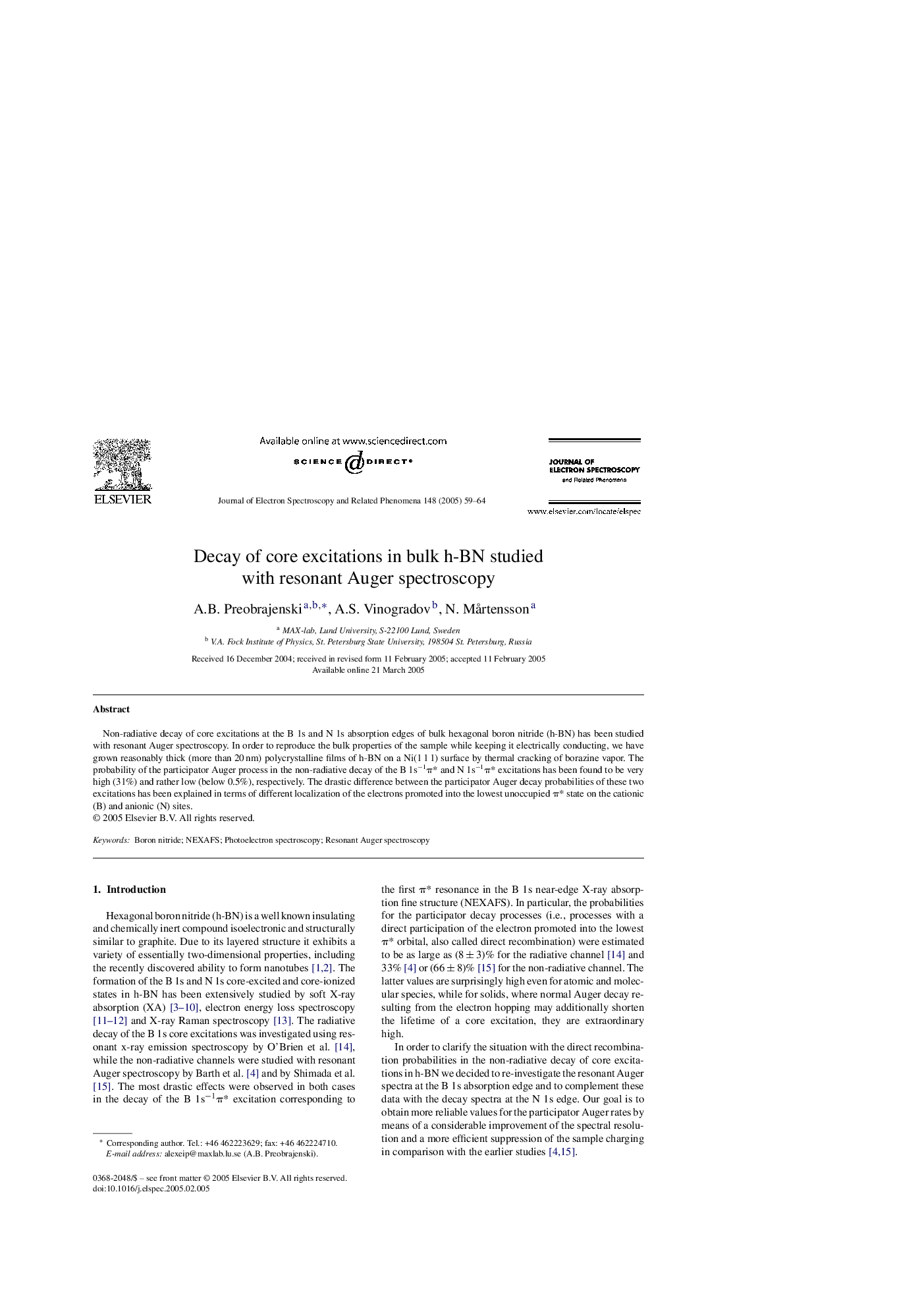| Article ID | Journal | Published Year | Pages | File Type |
|---|---|---|---|---|
| 9585164 | Journal of Electron Spectroscopy and Related Phenomena | 2005 | 6 Pages |
Abstract
Non-radiative decay of core excitations at the B 1s and N 1s absorption edges of bulk hexagonal boron nitride (h-BN) has been studied with resonant Auger spectroscopy. In order to reproduce the bulk properties of the sample while keeping it electrically conducting, we have grown reasonably thick (more than 20Â nm) polycrystalline films of h-BN on a Ni(1Â 1Â 1) surface by thermal cracking of borazine vapor. The probability of the participator Auger process in the non-radiative decay of the B 1sâ1Ï* and N 1sâ1Ï* excitations has been found to be very high (31%) and rather low (below 0.5%), respectively. The drastic difference between the participator Auger decay probabilities of these two excitations has been explained in terms of different localization of the electrons promoted into the lowest unoccupied Ï* state on the cationic (B) and anionic (N) sites.
Related Topics
Physical Sciences and Engineering
Chemistry
Physical and Theoretical Chemistry
Authors
A.B. Preobrajenski, A.S. Vinogradov, N. MÃ¥rtensson,
